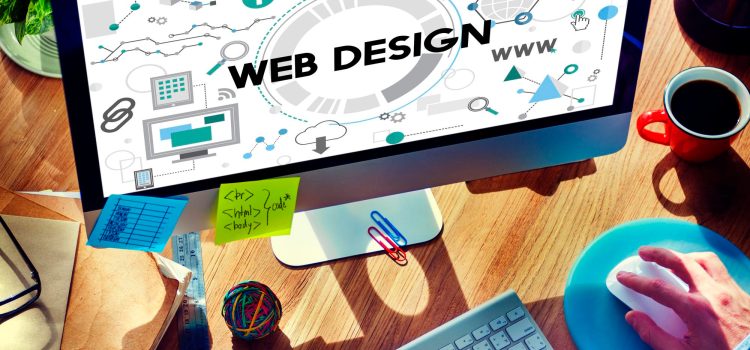










The impact of graphic design on website design is significant. Graphic design plays a crucial role in creating a website that is visually appealing, engaging, and effective in conveying information to the audience. Effective graphic design in website design can help businesses build a solid online presence, increase user engagement, and enhance the user experience.
In this article, we will explore the importance of graphic design in website design, the elements of graphic design that affect website design, examples of websites with effective graphic design, and the challenges of incorporating graphic design in website design. We will also provide recommendations for businesses and individuals looking to incorporate graphic design in their website design.
One of the primary reasons graphic design is important in website design is its ability to attract and retain website visitors. A visually appealing website is more likely to attract visitors and keep them engaged. Effective graphic design can create a positive first impression, increase user engagement, and increase conversion rates.
The use of colour, typography, and images can help create a visually appealing website that stands out from the competition. Colours can evoke emotions and convey a brand’s personality, while typography can be used to communicate important messages and enhance the overall aesthetic appeal of a website. Images, including photographs, illustrations, and infographics, can also help engage visitors and communicate information effectively.
By attracting and retaining website visitors, businesses can increase their online presence, generate leads, and ultimately drive sales.
Graphic design is also critical in creating and maintaining a brand’s identity. Using consistent colours, typography, and visual elements can help businesses establish their brand identity and differentiate themselves from their competitors. A well-designed website that reflects a brand’s identity can create a sense of trust and credibility with visitors.
Effective graphic design can also help differentiate a brand from its competitors. By using unique visual elements, such as custom illustrations or icons, a business can create a distinctive brand identity that sets them apart from its competitors. A well-designed website that reflects a brand’s identity can also help develop a sense of credibility and trust with visitors, leading to increased engagement and ultimately, conversions.
Moreover, graphic design can also be used to communicate a brand’s values and messaging effectively. For instance, if a brand values simplicity, the website design can reflect this through the use of clean lines and minimalistic design. On the other hand, if a brand is focused on innovation, the website design can feature bold typography and eye-catching graphics that communicate the brand’s forward-thinking approach.
Graphic design can also help businesses communicate complex information in an easy-to-understand manner. The use of infographics, charts, and diagrams can help businesses communicate statistics and data in a visually appealing and easily digestible format.
Infographics are visual representations of information, data, or knowledge that use graphics, icons, charts, and other visual elements to present complex information in a way that is easy to understand. Infographics can be used to convey statistics, trends, and other information that would be difficult to understand through text alone. They can also be used to summarize key points or provide a high-level overview of a topic.
The user experience and user interface are essential elements of website design that determine a website’s ease of use and overall usability. Effective graphic design can help improve the user experience and user interface by creating a clear and intuitive layout, using visually appealing elements, and ensuring that the website is easy to navigate.
It can also enhance the user experience by making it easier for users to navigate the website and find the information they need. A well-designed website can also improve load times, readability, and accessibility, all of which can contribute to a better user experience.
Good graphic design can make a website more visually appealing and engaging, encouraging users to spend more time on the site and interact with its content. This can lead to increased engagement and conversion rates, as users are more likely to take the desired action, such as making a purchase or filling out a form.
Graphic design can help convey information clearly and concisely, making it easier for users to understand the content and take action. A well-designed website can also make it easier for users to navigate the site and find what they’re looking for, which can lead to increased engagement and conversions.
Graphic design can also play a role in improving a website’s search engine optimization (SEO) by making it more visually appealing and easier to navigate. A well-designed website can also improve its bounce rate, which is a key factor in SEO.
Search engines, such as Google, prioritize websites that provide a good user experience. Good graphic design can enhance the user experience by making the website more visually appealing, easier to navigate, and faster to load. This can help improve the website’s bounce rate, which is a key factor in SEO.
A website with good graphic design is likely to be mobile-friendly, which is another factor that search engines consider when ranking websites. With more and more users accessing the internet through their mobile devices, having a mobile-friendly website is crucial for SEO.
Effective graphic design can also help create a clear content hierarchy on the website. This can make it easier for search engines to understand the website’s content and rank it accordingly. By using appropriate headers, subheaders, and other visual cues, website designers can help search engines better understand the website’s structure and content.
The logo is an essential part of a company’s brand identity. A well-designed logo can help establish the company’s visual identity and make it more recognizable to potential customers. The logo should be prominently displayed on the website, and the website’s design should complement the logo’s colours, fonts, and overall style.
The colour scheme is an important aspect of a company’s visual identity. Good graphic design can help select a colour scheme that reflects the company’s brand and message. The colour scheme should be consistent across the website and other marketing materials, such as social media profiles, brochures, and business cards.
Typography refers to the style and arrangement of text on a page. Good graphic design can help select typography that reflects the company’s brand and message. The typography should be consistent across the website and other marketing materials, and it should be easy to read and visually appealing.
Visual elements, such as photographs, illustrations, and graphics, can help convey a company’s brand identity and message. Good graphic design can help select and create visual elements that align with the company’s brand and message. These visual elements should be consistent across the website and other marketing materials.
Consistency is key when it comes to brand identity and recognition. Good graphic design can help ensure that the website’s design is consistent with the company’s brand identity and message. This consistency should extend to other marketing materials, such as social media profiles, brochures, and business cards.
When designing a website, it’s important to consider the target audience, the company’s brand identity and message, and the website’s goals and objectives. The design should be visually appealing, easy to navigate, and accessible to all users, including those with disabilities.
Overall, good graphic design is not only about making a website look beautiful, but also about creating a design that enhances the user experience, communicates the company’s message and values, and ultimately helps achieve the website’s goals. With the right graphic design, a website can stand out from the competition, improve its search engine rankings, and effectively communicate the company’s brand identity to potential customers.
| Cookie | Duration | Description |
|---|---|---|
| cookielawinfo-checkbox-analytics | 11 months | This cookie is set by GDPR Cookie Consent plugin. The cookie is used to store the user consent for the cookies in the category "Analytics". |
| cookielawinfo-checkbox-functional | 11 months | The cookie is set by GDPR cookie consent to record the user consent for the cookies in the category "Functional". |
| cookielawinfo-checkbox-necessary | 11 months | This cookie is set by GDPR Cookie Consent plugin. The cookies is used to store the user consent for the cookies in the category "Necessary". |
| cookielawinfo-checkbox-others | 11 months | This cookie is set by GDPR Cookie Consent plugin. The cookie is used to store the user consent for the cookies in the category "Other. |
| cookielawinfo-checkbox-performance | 11 months | This cookie is set by GDPR Cookie Consent plugin. The cookie is used to store the user consent for the cookies in the category "Performance". |
| viewed_cookie_policy | 11 months | The cookie is set by the GDPR Cookie Consent plugin and is used to store whether or not user has consented to the use of cookies. It does not store any personal data. |